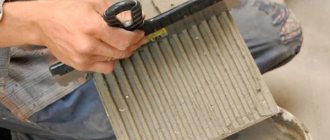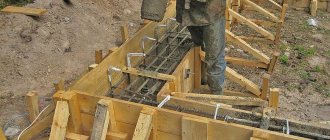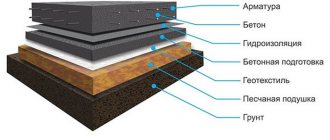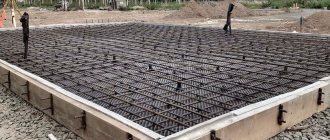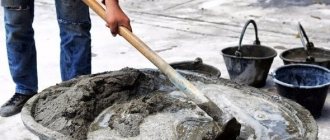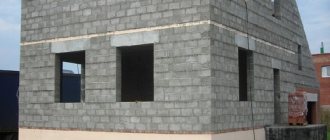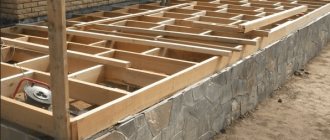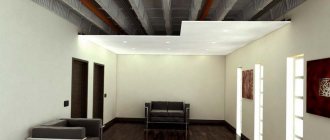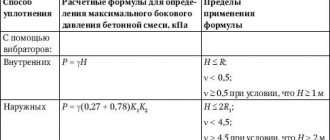- /
- Putty consumption per 1m2
In order to determine the putty consumption per 1 m2, you must first decide what type of putty you will use. It is necessary to distinguish between 3 types of putty:
- Starting;
- Universal (start-finish);
- Finish.
Putty Prospector base 20 kg
270 ₽.
Product code 105
Putty “Starateli” Basic is used for leveling walls made of concrete, brick, etc....
Promotion
Moisture-resistant putty Weber.Vetonit VH (white), 20 kg
740 ₽. 750 ₽.
Product code 192
Description Vetonit VH putty is a white, waterproof, cement-based finishing putty for.....
Gypsum putty Knauf Uniflot 25 kg
1500 ₽.
Product code 110
Gypsum putty KNAUF UNIFLOTT (Knauf Uniflot) is a building material that is used.....
Features of putty and plaster
Plaster is a mixture of granular structure that is used for application to walls made of concrete, brick, and foam blocks. Most often it is the basis for finishing work, but in some cases it can be a finishing material. Eliminates significant unevenness and small cracks. Large gaps are recommended to be sealed using a special mesh. The composition of the plaster is presented in two versions.
- Gypsum - which has good insulating qualities regarding heat and noise. It is expensive. The plastic material allows you to level any surface without haste.
- Cement - durable, resistant to significant temperature fluctuations. The composition additionally includes sand and polymer adhesive admixtures for better adhesion to surfaces.
Puttying of walls is done after applying plaster. To do this, it is desirable that the surface is flat. The structure of the mixture is more uniform compared to plaster. Before applying the mass, it is better to treat the coating with a primer, which has antiseptic properties and strengthens the layers together. The putty starting solution is applied first in the sequence to eliminate dents and irregularities. The finishing mass acts as the final stage before decorative work.
Consumption rate of putty for plaster per 1 m2
On average, the amount of putty after plastering is from 1 to 1.5 kilograms per square meter of surface. The volume of the required mixture and consumption depends on several factors:
- layer thickness;
- type of putty;
- composition density.
Information on putty consumption per 1 m2 of plaster can be found on the label that accompanies each product package. The layer thickness is assumed to be 1 mm. The following options are noted.
- The mass of putty for cement-based plaster for facades and interior walls is from 1.2 to 1.5 per square meter of wall.
- The gypsum mixture will need from 0.8 to 1 kg.
- Polymer-based suspension is the most economical type. Treatment of 1 m2 of walls will be 600 grams.
Attention! The quality of the plaster application determines the amount of putty needed for the repair.
You will need more starting putty. Consumption is determined by the quality of the base coat. A little finishing putty is needed because it is applied to a more even surface. Usually its consumption is 3 times less. The universal composition is a more convenient option, but this option is one of the expensive ones.
Use of popular brands
Wall putty
Related article: Painting walls with your own hands (instructions with photos)
Vetonit putty has long established itself as a high-quality solution used for plastering walls before subsequent decorative finishing. Knowing the consumption of Vetonit per square meter, you can easily find out how much material you will need. The calculator on the manufacturer’s website will help you make the calculations.
The use of Vetonit putty should take place in dry rooms, where per square meter. per meter you will need approximately 1.2 kg of putty. But if you use plaster for wallpaper or painting, then Vetonit will have a consumption of 1.5 kg per square meter. meter with a layer thickness of 1 mm.
Shitrok putty can also be used for independent work. Its peculiarity is its low consumption. When treating walls with it, you will have a consumption of 0.5 kg per square meter if the thickness of the layer used is 1 mm. Shitrock has long been loved not only by professional craftsmen, but also by self-taught people, as it has certain advantages:
- Shitrok does not require dilution, as it is immediately ready for use
- Application to walls is very easy
- Quick drying gives the plaster an additional advantage
- Shitrok can be used on the surface of a gypsum board wall
- Economical consumption
- Contains no asbestos
Factors affecting material costs
Before carrying out work on leveling the surfaces, the master determines how much finishing materials are needed. The approximate weight of putty that will be needed for coating is indicated on the product label. For different brands and composition, the indicators differ. However, during the renovation process, costs may increase.
After plastering
When layer-by-layer distribution of mortars is carried out, including base plaster, the consumption increases for the following reasons.
- violation of mixing technique and quality of putty application;
- method of distributing the mixture over the surface;
- the amount of residual substance on the surface of the container after dilution and use of the solution.
Without plaster
If you immediately use putty as the bottom layer without plastering the walls, you will have to purchase the material with a reserve. At the same time, factors that increase the cost of the mixture are:
- increased consumption of putty, which takes into account the presence of deep and small cracks, unevenness, and curvature of surfaces;
- increasing the frequency of application of layers;
- lengthening the drying time of the material.
Important! Compliance with the correct sequence of repair stages determines the quality of the repair.
What determines the required amount of putty?
When calculating, the rate of putty consumption per 1 m2 should be determined from the condition and composition of the surfaces to be coated. If they are crooked, with many chips and cracks, a large amount will be lost.
Important! The amount of starting putty required for work increases with the increase in chips and cracks.
The walls can be made of plasterboard. Then the putty consumption per 1 m2 of drywall will be very small. Drywall is the most popular leveling material. It is simply attached with nails or a drill. Many people think that after such an operation they can start coloring, but this is not so. Even after using this option, it is necessary to resort to facade putty to eliminate the joints of the sheets between themselves, the floor and the ceiling. Don't forget about the heads of nails and screws, they are very visible after wallpapering. You will need very little finishing, so this is the fastest and cheapest way.
You will need plasterboard, cement or polymer mixture. Cement is used in houses with high dampness to eliminate mold. The remaining two are used in other types of premises. Approximate costs 1100 gr. per 1m2. Glue-based solutions are the most economical - 0.5 kg. per 1m2.
How to replace linoleum: tips for removal and proper installation on different substrates
Modern dryers or clotheslines (120 photos): how to choose the right system for drying clothes on the balcony
- Recommendations for the design of the corridor and hallway in the apartment - 130 photo ideas
A plastered surface requires more putty per 1m2 than a plaster surface. In this case, the start and finish views are used exactly. To start, they often take the gypsum version, due to its strong adhesion. A thin layer takes 0.8-0.9 kg. The final coating should be less than 1mm. For example, for 0.5mm. consumption per 1m2 is approximately 0.5 kg. dry mixture.
A smoothly concreted wall is plastered before puttying. Afterwards, two types are used: start and facade. Moreover, the first one should not exceed 6 mm, and the front one 3 mm. The main thing is to avoid any irregularities.
Priming Features
Many people ask the question: is it necessary to follow all stages of wall preparation and is it necessary to prime the plaster before applying putty? Priming walls is a mandatory process that provides a number of functional properties. The mixture is a special solution that serves for strong adhesion of materials. When penetrating into a porous surface, the mixture hardens, creating a monolithic compound. The following advantages of the soil mass can be mentioned.
- The adhesive properties of the suspension prevent the destruction of the base layer and the peeling off of decorative elements.
- The resistance of the surface to negative atmospheric factors increases.
- The mixture contains an antiseptic component that effectively fights mold and mildew.
- The amount of finishing material required for work is reduced.
- A thin film is formed on the surface, which prevents the appearance of residual material on the wallpaper and decor.
- The subsequent application of plaster and putty is facilitated.
The choice of primer depends on the type of construction work, the quality and composition of the walls. It is better to first study the instructions for use to determine the most suitable option. The order of coating should be followed, depending on what kind of primer is used. Before applying putty, you must thoroughly clean the walls of old material. Each layer, including plaster, is treated with a primer. This provides higher strength and reduces the risk of wallpaper peeling off and base mixtures falling off.
In most cases, primer comes in liquid form. Some mixtures need to be diluted with water according to the information on the label. Each applied layer must dry well, especially before puttying after plastering and wallpapering.
Calculation of mixture consumption
Experienced craftsmen, focusing on the initial data, will quickly suggest the required amount of material to use and make the necessary calculations. However, if repair work is carried out independently, it is important to correctly calculate the mixture consumption. Each package indicates the consumption rate of ready-made putties that will be required per square meter of surface when removing a layer 1 mm thick. It is important to know the area of the room wall being treated. You should also take into account additional losses, which amount to 10%. The product of all parameters is an indicator of the required putty consumption.
Proper execution of the repair stages allows you to achieve an ideal high-quality result.
Calculation algorithm
To carry out calculations, it is recommended to use the following instructions:
- Take a straight bar (a very long rule will do). Move it along the wall, and thus measure from the rule or rail to its surface. This must be done with a constant step, vertical or horizontal;
- After adding up the results obtained, divide them by the number of measurements taken. The final figure is the thickness of the coating (average);
- Based on these data, calculate the estimated size of the material;
- Multiply by total surface area.
We suggest you read: What is aluminum tape used for? → Read the answers!
